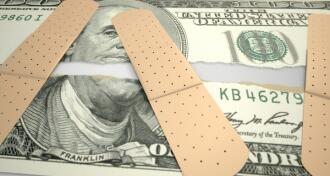
While much of the focus of the CARES Act has been on the Paycheck Protection Program, which allocates $349 billion for new SBA loans to cover qualified expenses, the Act contained a key provision related to existing SBA loans.
The Act appropriated $17 billion to subsidize some small business loans. For loans in regular service made under Section 7(a) of the Small Business Act, Title V of the Small Business Investment Act, or under 7(m) of the Small Business Act made by an intermediary before enactment of the Act, the SBA will pay the principal, interest, and fees owed for six months. Payments commence with the first payment due after March 27, 2020. The SBA also will pay six months of principal, interest, and fees for new SBA loans made between March 27, 2020, and September 27, 2020.
We previously notified you about SBA guidance reminding SBA 7(a) Lenders and 504 Certified Development Companies of their unilateral authority to provide borrowers with temporary relief through deferred payments of up to six months. Many borrowers and lenders entered into deferral agreements before the enactment of the CARES Act. The subsidies apply even if a loan is on deferment. If a loan is on deferment, then the SBA payments will commence with the next payment due after the deferment period.
This program may provide sufficient time to save some small businesses and keep their loans out of liquidation. For example, for a 7(a) loan not sold on the secondary market, the lender could unilaterally grant the borrower a six-month deferral. The SBA will subsidize an additional six months of payments. The deferral could come before or after the subsidy payments. Regardless, the borrower would obtain debt service relief for a year and the lender would receive six months paid by the SBA (and any interest collected during the deferral period).
In addition, the Act waives the maximum loan maturity limits for those loans under deferment and also extends the lender site visit requirement to within 60 days of a non-default adverse event and 90 days for a default adverse event.
--
© 2025 Ward and Smith, P.A. For further information regarding the issues described above, please contact .
This article is not intended to give, and should not be relied upon for, legal advice in any particular circumstance or fact situation. No action should be taken in reliance upon the information contained in this article without obtaining the advice of an attorney.
We are your established legal network with offices in Asheville, Greenville, New Bern, Raleigh, and Wilmington, NC.








